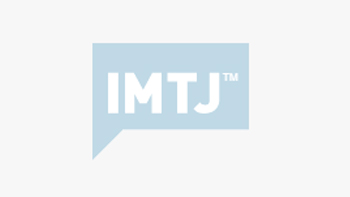Countries involved in health and medical tourism vary enormously; some have a high profile about what they do; others have a high profile on what they plan to do. Many in Europe have a low international profile, but are doing as well, if not better, than those who make the most noise.
Countries involved in health and medical tourism vary enormously; some have a high profile about what they do; others have a high profile on what they plan to do. Many in Europe have a low international profile, but are doing as well, if not better, than those who make the most noise.
Slovakia is not usually thought of as a popular destination for health tourism, but its spas enjoy a long and highly regarded reputation. Each year thousands of foreigners travel to Piestany, Trencianske Teplice or Bardejov and many of them return annually, often several times a year, to receive special treatments with various kinds of mineral waters, or with mud, or just to enjoy the wide range of wellness procedures offered.
Slovakia has many deep underground springs with a variety of thermal and mineral properties. People have known the healing value of these waters for centuries, so treatments based on therapeutic mineral water are popular. But Slovakia also offers climatic treatment. There are more than 20 specialised resorts in the country providing professional spa treatments.
Avicenum is a travel agency specialising in wellness tourism, which regularly brings foreigners to Slovak spas, mainly from the Czech Republic, Poland, Germany and Austria, as well as from the Middle East, primarily the United Arab Emirates, Kuwait and Lebanon.
The recession has caused a few problems, but many hotels and spas have used the quieter times to redevelop and improve their offering, something they had problems doing when they were full for most of the year. The improved quality and cost–effective prices, are leading to an upturn in visitor numbers. This is despite Slovakian authorities failing to build its image as an attractive destination as rivals Austria and the Czech Republic have. Slovakia has no integrated development of tourism with agencies, tourism associations, hotels, and others working together.
The most popular spa destination for Slovak as well as foreign visitors is Piestany where the 200-year-old spa is also the biggest spa in Slovakia. It has natural springs of thermal mineral water. Last year 48,400 people received treatment there of which 24,750 were overseas tourists.
The second most-visited Slovak spa is in Trencianske Teplice: last year it recorded a drop in Czech and Polish clients but an increase from Austria, Germany and the Netherlands. Foreign customers account for a quarter of all visitors. Those from Germany, Austria, and the Netherlands are mostly interested in traditional spa treatments, rather than more modern wellness and relaxation stays. Visitors from the Czech Republic are more likely to come for shorter wellness and relaxation stays where the shorter travel distance plays a role. Here, foreign guests now account for about 80% of the clientele of the Flora Hotel, mostly from the Czech Republic and Germany
At the spa in Sklené Teplice that features a thermal cave steam bath, one in five visitors is from overseas and that is expected to increase as it has recently developed spa facilities, especially balneotherapy, accommodation and pools. Most foreign visitors come from the Czech Republic and the other two main markets are Germany and Russia. Most clients are repeat visitors.
A newer attraction for foreign health tourists is Dudince in southern Slovakia where visitors mainly come from the Czech Republic and Germany, with others from Poland and Hungary. The Diamant spa reports increased interest from Norway, Denmark and Sweden to add to existing visitors from Germany and Austria, and in 2009 foreign guests were 30% of the total numbers; most of the spa’s clients are aged 60 or over, usually for two- or three-week all-inclusive stays.








 ©2024 All rights reserved LaingBuisson
©2024 All rights reserved LaingBuisson 


